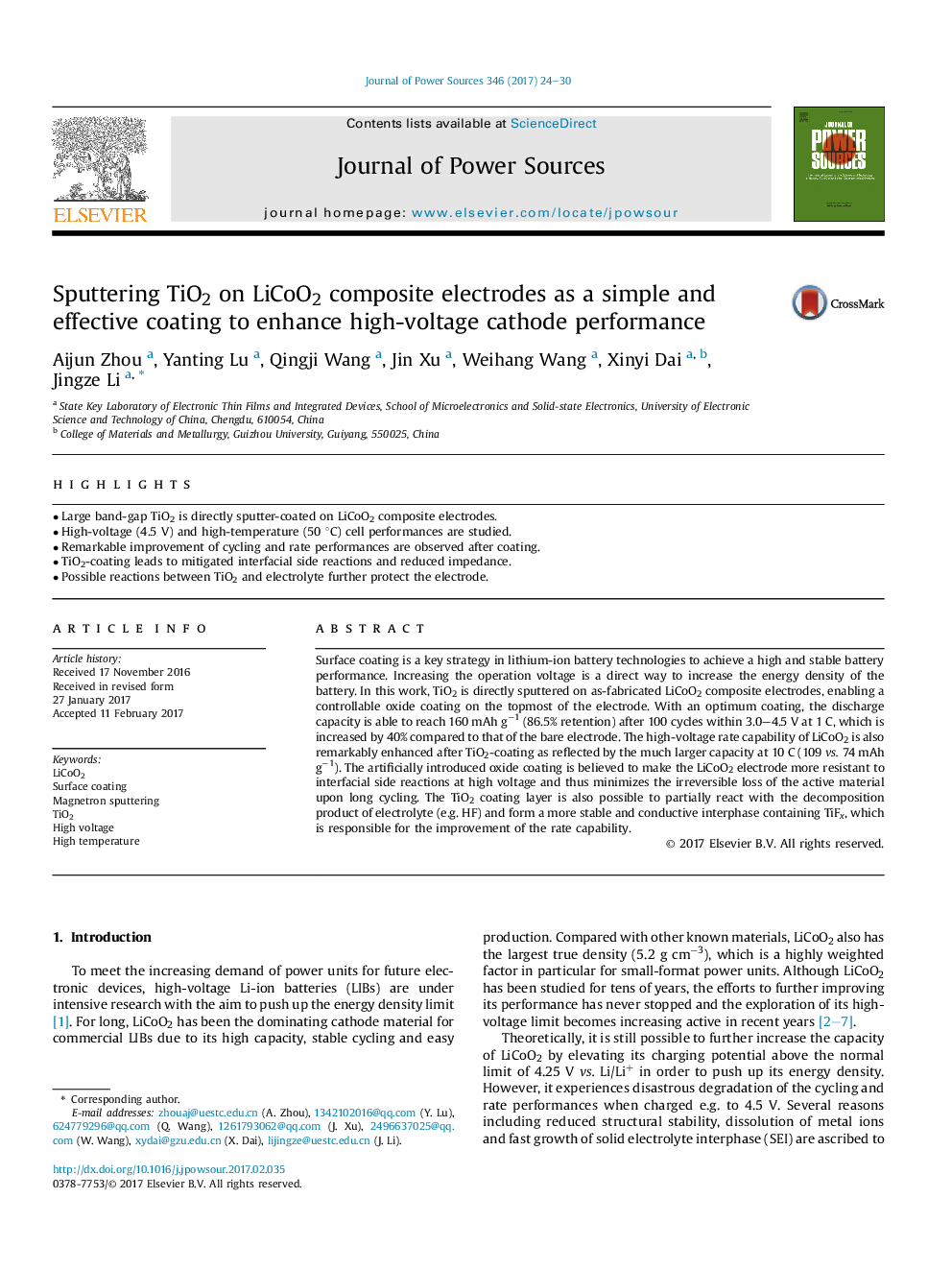| Article ID | Journal | Published Year | Pages | File Type |
|---|---|---|---|---|
| 5149720 | Journal of Power Sources | 2017 | 7 Pages |
Abstract
Surface coating is a key strategy in lithium-ion battery technologies to achieve a high and stable battery performance. Increasing the operation voltage is a direct way to increase the energy density of the battery. In this work, TiO2 is directly sputtered on as-fabricated LiCoO2 composite electrodes, enabling a controllable oxide coating on the topmost of the electrode. With an optimum coating, the discharge capacity is able to reach 160Â mAh gâ1 (86.5% retention) after 100 cycles within 3.0-4.5Â VÂ at 1Â C, which is increased by 40% compared to that of the bare electrode. The high-voltage rate capability of LiCoO2 is also remarkably enhanced after TiO2-coating as reflected by the much larger capacity at 10Â C (109 vs. 74Â mAh gâ1). The artificially introduced oxide coating is believed to make the LiCoO2 electrode more resistant to interfacial side reactions at high voltage and thus minimizes the irreversible loss of the active material upon long cycling. The TiO2 coating layer is also possible to partially react with the decomposition product of electrolyte (e.g. HF) and form a more stable and conductive interphase containing TiFx, which is responsible for the improvement of the rate capability.
Related Topics
Physical Sciences and Engineering
Chemistry
Electrochemistry
Authors
Aijun Zhou, Yanting Lu, Qingji Wang, Jin Xu, Weihang Wang, Xinyi Dai, Jingze Li,
